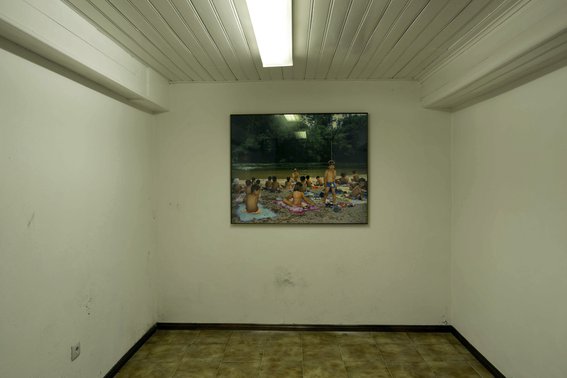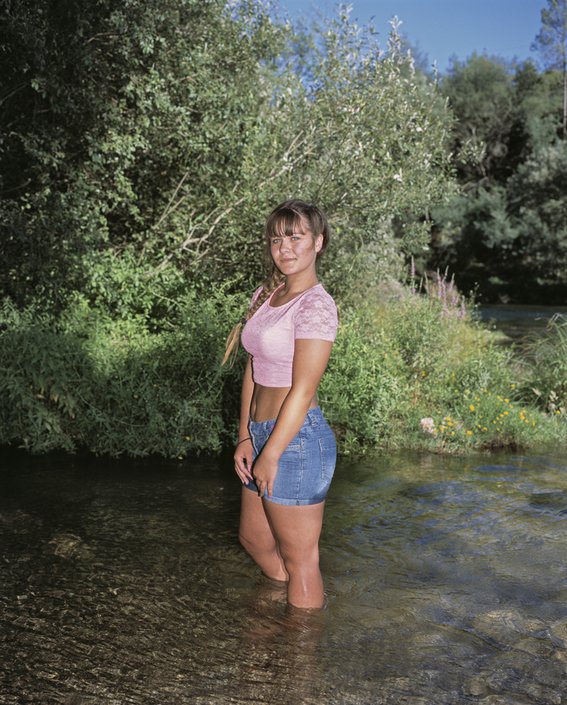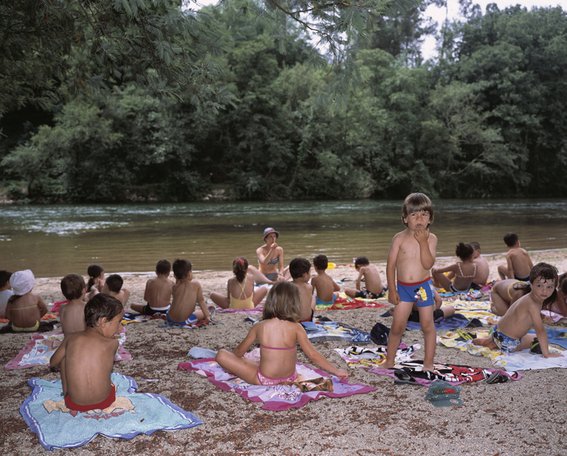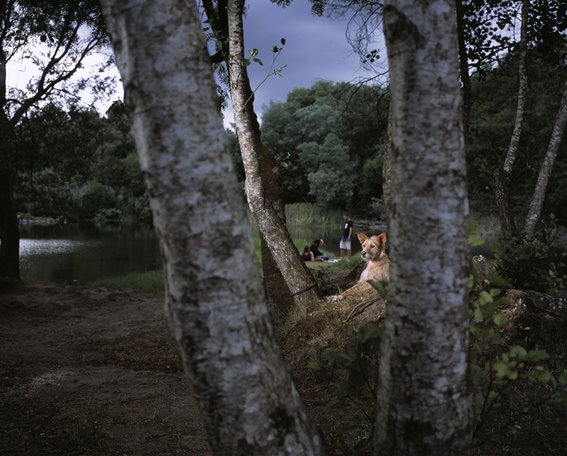Tito Mouraz
Fluvial
Two relatively harmless epidemics affect nature photographers and topographic photographers. One is, in the words of Lewis Baltz, ‘calendar aesthetics’; the other is irony. Notwithstanding the fact that he is interested in nature, and that he has devoted himself to a particular territory (northern and central Portuguese riverside beaches and villages), Tito Mouraz appears to be immune to both.
Photographed between 2011 and 2018, these fluvial scenes are rather expressive of a long, patient, reflection on how to be decent if also sophisticated toward a visually banalized geography. It also helps to remind that this is his personal geography, which is the source of further difficulties, some other than photographic (how to deal with one’s origins without indulgence but also without excessive harshness? how to reinvent a landscape as worn by habit?). The solution which Tito Mouraz seems to have found is the creation of a fictional atmosphere, an ode to leisure, based on theatrical gestures and a defamiliarizing gaze, through which he is still able to retain, almost paradoxically, a forthright sense of belonging and empathy.
Furthermore, this Fluvial series makes an analogy between erosion and vision, based on visual analogies between human bodies and other types of bodies, organic and inorganic. Just as the currents bend tree trunks and shape mineral blocks, which these images depict almost as land art sculptures, Tito Mouraz’s long term relationship with this territory has a depurating, revelatory, function, which makes him perceive human figures first and foremost as being analogous to such natural forms.
This gesture has a double effect. On the one hand, it signals elegantly the telluric (or rather, the fluvial) ties between certain bodies and certain places. Mutatis mutandis, it challenges us, rather provocatively, on the other hand, to entertain the nearly inconceivable stance of regarding human bodies as works of land art, as mere natural forms. Fortuitous extras within a protracted study of form, light and color, in the intimate geography which defines the authors work throughout the last decade or so, the role these people are given is not much different from that of models in painting, except that they are free to move around. The problems that this may cause to the photographer are here solved by means of certain explicit procedures, by which technical skillfulness and decency towards the subject are proven inseparable.
Among other procedures, I would like to retain three. First, the use of water not just as an element of suspension (which returns us, as observers, to irreducibility of human form), but also as an optical tool itself, the refracted image of whose submerged bodies is as nice metaphor for the dilution of the form of human individuals while on vacation. Then, in some of the portraits, there is a masterful combination of the flash with a fast lens aperture, from which there results, not exactly photographs of the landscape, but rather photographs of images of the landscape, as if blurry scenarios in front of which a model poses, through which the photographer seizes nature as his own, ample, private studio. Lastly, there is also the way how, by means of a robust use of the flash, the bodies emerge from chiaroscuro schemes whose precedents reside not so much in the photographic history as in the history of painting, reminiscent as they are of works by masters as Manet and Courbet. Realist if dreamlike, conveying a pagan sense of nature and the atmospheric ambiance of an infinite Sunday, Fluvial reminds one of a summer’s dream.
Humberto Brito
untitle
Artista inserido no programa de residências artísticas
Bio
Tito Mouraz, 1977, Portugal.
Finalizou o curso de Artes Visuais e Fotografia na Escola Superior Artiística do Porto em 2010, sendo esta a cidade onde vive e trabalha actualmente. Expõe regularmente desde 2009 em Portugal e no estrangeiro, sendo de destacar as exposições no Módulo Centro Difusor de Arte, Lisboa (Portugal); Format Festival International de Fotografia, Derby (UK); Blanca Berlin Galeria, Madrid (Espanha); Museu da Imagem, Braga (Portugal); Fotofestiwal Lodz (Polónia); Festival Circulation(s), Paris (França); Carpe Diem Arte e Pesquisa (Lisboa) e Encontros da Imagem, Braga (Portugal).
Em 2013 foi vencedor do Prémio Internacional de Fotografia Emergentes DST e da Leitura de Portfólios Carpe Diem Arte e Pesquisa.
Em Portugal é representado pelo Moódulo – Centro Difusor de Arte, Lisboa e em França pela galeria Voies Off, Arles.
Presente em algumas colecções particulares, fazendo também parte da colecção do BES Art.



